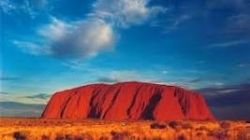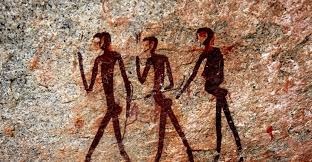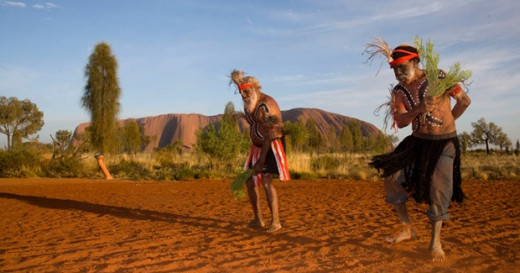Reasons NOT To Climb Uluru "Ayers Rock"

Uluru
Locally known as Uluru, Ayers Rock is a natural sandstone formation with a distinctive red colouration and is one of Australia's most recognisable landmarks. It is an incredibly dramatic sight, leering 1,142 ft high with a circumference of 5.8 miles, over the other flat terrain. Most of its mass is not visible as it is underground (approximately 6 kilometres).
Ayers Rock
Ayers rock has massive cultural significance to the Anangu people, who inhabit the area and give tours around Uluru to visitors and tourists. Geologists refer to Ayers Rock as an inselberg, which is defined as a 'prominent and residual knob or hill rising abruptly from, and surrounded by, a relatively flat erosion lowlands in a hot and dry region'.
To date, there are around 20 species of mammal inhabiting the rock, which is a huge decrease in the original 46 species years ago and there is some debate as to whether or not this is to do with the increased tourism and climbing of the rock. Naturally, being one of the most famous landmarks of Australia, and on many individual's list of "places to see", it attracts thousands of people wanting to climb the rock as a personal achievement.
Even though in 1964 a long rope was added to the rock to make the climb easier and more accessible to those wanting to climb it, it is still a dangerous and difficult process. There have been 34 deaths recorded, and it is strongly advised that at times when there are high winds, no one climb the rock. For those who suffer from cardio problems, vertigo or those who are unfit, is is advised that the climb is not attempted.
However, each person wanting to take the climb as a personal challenge, to push themselves and their fitness and find that adrenaline rush, may say that the danger goes with climbing, which for many people is a passion, and they make this decision which will affect them and only them. But in the case of Uluru this is simply not true.
Have You Visited Ayers Rock
Have You Visited Ayers Rock
One Of Many Cave Paintings

Ayers Rock
The rock formation which is such an important part of Aboriginal culture.

Uluru's Significance Within Anangu Culture
To the Anangu people, Uluru not only has massive cultural importance and impact, but also spiritual significance. It is against their law and beliefs to climb the rock and they respectfully ask the visitors and tourists to acknowledge this and not take the climb. This is also partially because they feel a sense of responsibility for the safety of the visitors, as well as the fact that the path crosses a traditional Dreamtime track.
This sacred Aboriginal Site is precious to the locals, but unfortunately, they are powerless to stop tourists from climbing up the rock. The other problems with visiting parties climbing Ayers Rock, is that as it is such a remarkable climb and such an incredible landmark, many people will take bits of the rock as souvenirs (which to them is harmless), back home with them. The long-term impact of this is huge, but again, ignored by many. So culture, religion, law, safety and respect are reasons to refrain from climbing the rock - and what about the previously mentioned 'huge long-term impact'?
Just because of its size and grandeur, people assume that Ayers Rock is indestructible and will stand forever, but this is quite simply not the case. The rock faces natural erosion, especially as sandstone is one of the least durable rocks, as well as the effects from climbers and tourists. Also, if we take a step back and realise that the number of mammals originally inhabiting the rock has more than halved, there is potentially far more at risk than people realise.
This is a part of natural history and should be here for many more centuries for other generations to enjoy, there are many places to climb and enjoy in Australia, and many more ways to enjoy Uluru than by simply climbing it: the tours around the rock not only include a full history, but also information on mammals, flora and foodstuffs that can be found in the bushes, as well as stories and myths that are told and passed down the generations of the Anangu.
Tourists can also take helicopter tours of the rock and explore the surrounding springs, water holes and caves, which have a vast variety of ancient cave paintings. The climbing of the rock has almost been banned a few times in the past: in 2010 there was outrage and a call for a ban as there were reports of nudists, a strip tease and a game of golf on top of the rock. While this may appear amusing and harmless to some, this is a site with huge religious significance and this kind of behaviour is incredibly thoughtless and damaging, as well as offensive. If you are thinking of climbing Uluru, remember that over thirty people have died on the climb, and a great many more have been injured.
Hundreds of people a year need to be rescued due to broken bones, heat exhaustion, other injuries and extreme dehydration. The Anangu people feel responsibility and great sadness when fatalities and injuries happen. The climb is steep, can be slippery or extremely hot (the rock surface can also reach very high temperatures), and strong gusts of wind can strike at any time. If not for the locals who regard the rock as of extreme cultural importance, then at least reconsider for your own safety.






